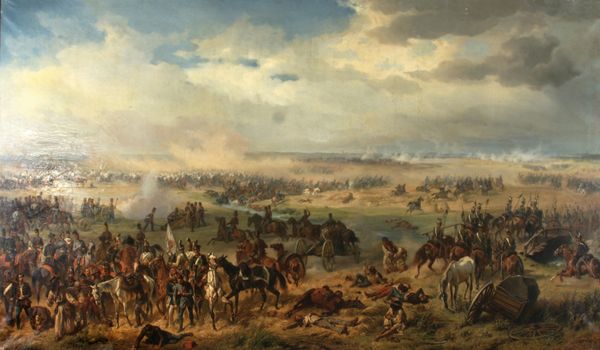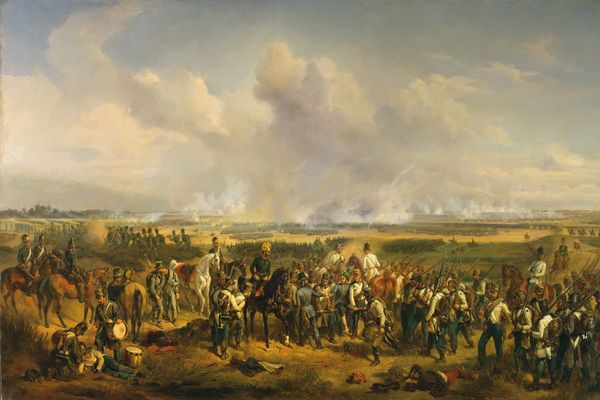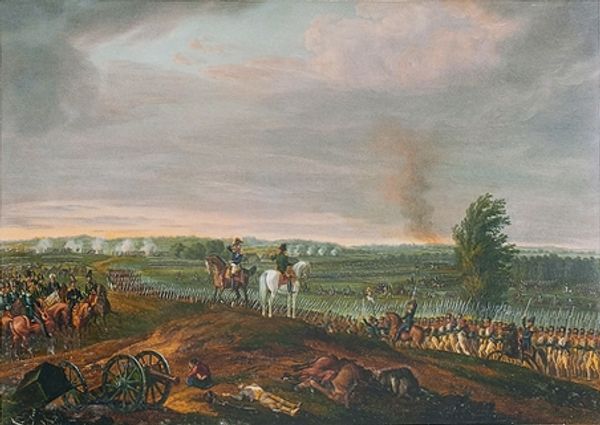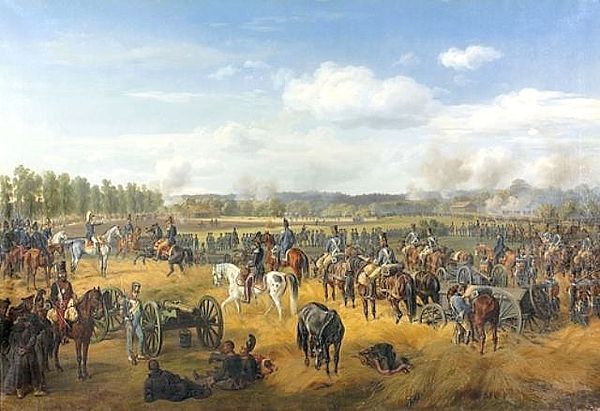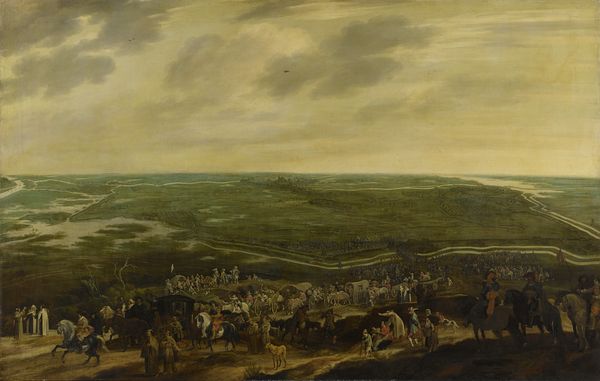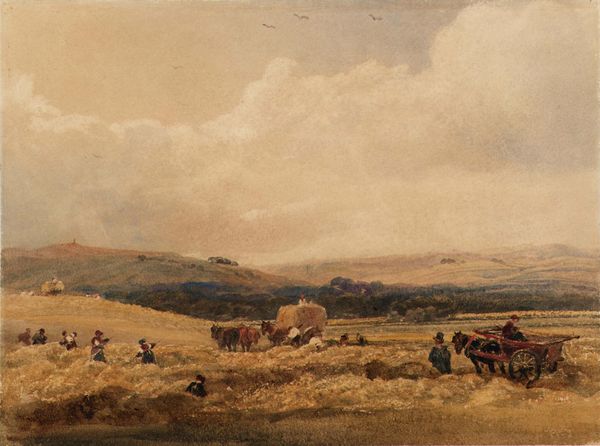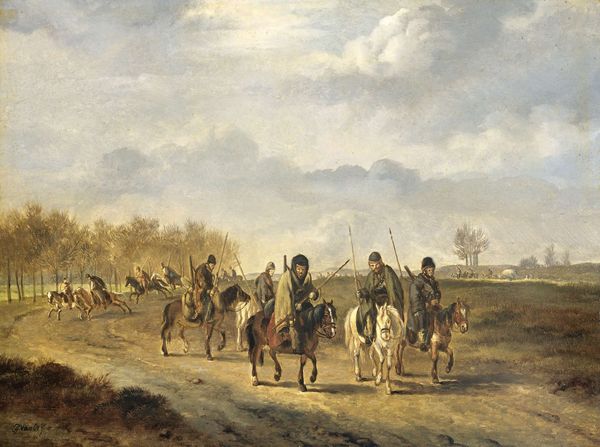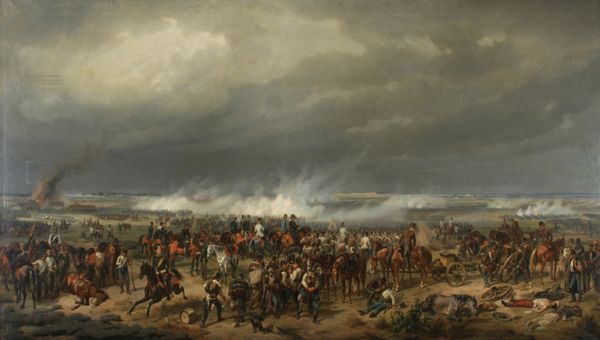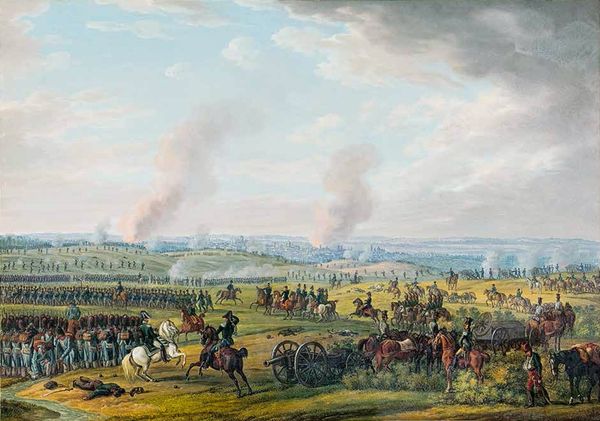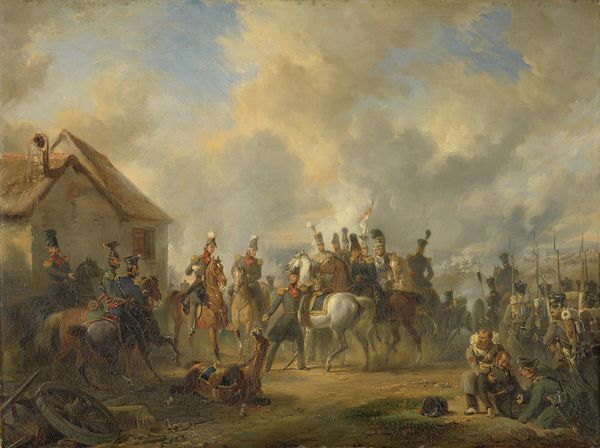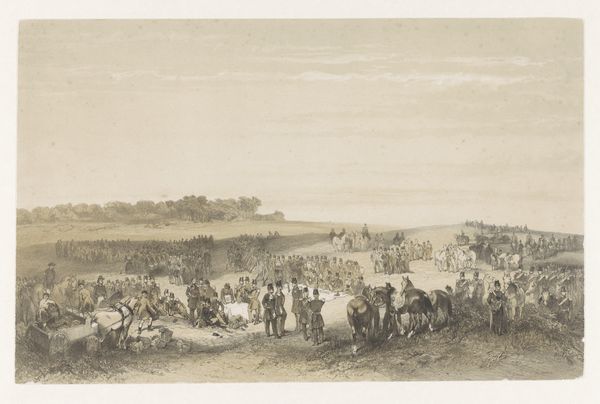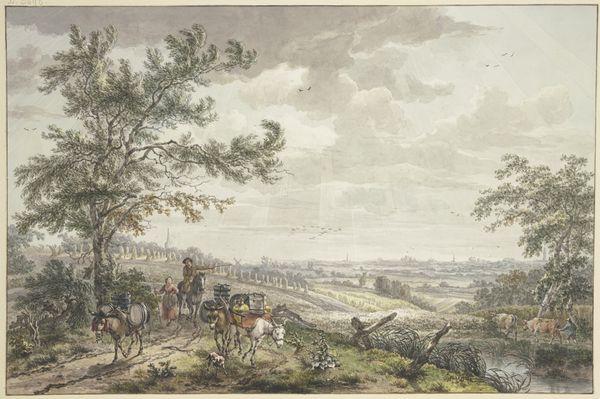
painting, oil-paint
#
painting
#
oil-paint
#
war
#
landscape
#
oil painting
#
romanticism
#
watercolour illustration
#
history-painting
#
watercolor
Copyright: Public domain
Editor: This is Albrecht Adam’s "Battle for Moscow 7 September 1812," painted in 1825 using oil paint. It depicts a vast battlefield scene. I’m immediately struck by how detached it feels. The battle seems so far away, like a staged event. How do you interpret this work? Curator: The "detachment" you sense is quite telling. Paintings like these, especially from the Romantic period, were often commissioned or created to serve specific socio-political narratives. The question is, whose narrative is being served? Consider the role of history painting at the time. It wasn’t just about accurately depicting events, but about shaping public memory and legitimizing power. Editor: So, it’s about more than just documenting the battle itself. Curator: Precisely. Look at the composition. Who are the figures in the foreground, so calmly observing the distant conflict? They represent leadership, control, a detached perspective of those who were removed from the chaos of war yet instrumental in directing it. This isn't necessarily an 'objective' account, but a carefully crafted representation designed to influence public perception of war and those in power. Editor: Is it downplaying the brutality of war, perhaps? Curator: Indeed. This piece promotes a controlled and heroic vision. Think about the museums or galleries that would display this artwork during the 19th century and beyond. What message are these institutions subtly reinforcing about the nature of conflict and the role of authority? Also, observe that sky--darker skies were part of the style back then, but still they point to darkness on the horizon of these events, despite the seemingly detached leadership. Editor: I see what you mean. I had not thought about how the museum itself contributes to the political undertones. So much more to it than just a pretty picture. Curator: Exactly, it’s a piece with carefully curated visibility with much to unpack in its visual representation! Always consider the context in which art is created and consumed, and what it might say about power structures. Editor: That's a really helpful way to look at historical paintings. Thanks for the insight.
Comments
No comments
Be the first to comment and join the conversation on the ultimate creative platform.
